Dogs can’t use words to tell you they’re hurting, but they don’t need to.
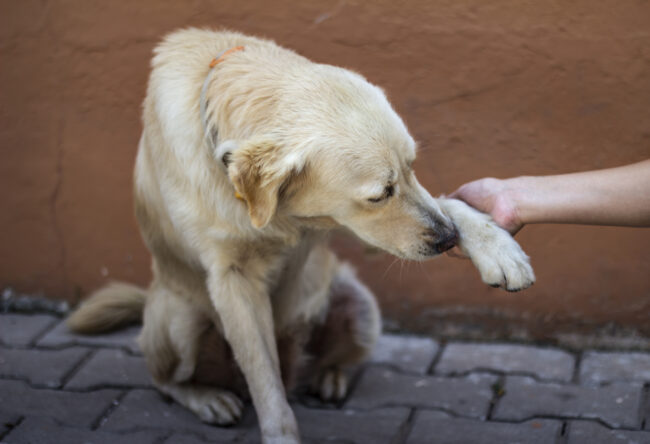
Their body language, behaviour, and subtle changes in routine often hold the clues. The problem is, many of these signs are so quiet that we miss them or brush them off as nothing. However, pain in dogs is serious, and catching it early can make all the difference to their health and happiness.
1. They suddenly become withdrawn or hide.

If your normally social dog starts seeking solitude, it’s a red flag. Dogs in pain will often retreat to quiet corners, under beds, or behind furniture where they feel safe and left alone. It’s an instinct rooted in self-preservation—when something feels wrong, they go into hiding to avoid further discomfort or vulnerability.
This shift can be easy to overlook, especially if it’s gradual. But if your dog starts avoiding eye contact, seems less interested in interaction, or is suddenly harder to find around the house, it’s time to pay attention. Withdrawal doesn’t mean they’re just “tired”—it could be a silent indicator that something hurts.
2. They’re more aggressive or easily irritated.

Even the gentlest dogs can become defensive when they’re in pain. A sudden growl, snap, or grumpy reaction might seem out of character, but it could be their way of protecting a sensitive area. You may notice they flinch when touched or avoid being picked up, especially in places that didn’t use to bother them.
This behaviour isn’t about disobedience or bad temperament—it’s a survival instinct. Dogs can’t say “ouch,” so they use body language to tell you to back off. If they seem edgy, especially when handled or approached in a certain way, there’s a good chance they’re guarding something that’s hurting them.
3. They’re licking or chewing the same area repeatedly.

Excessive licking or nibbling at one part of the body often signals pain. You might see your dog obsessively licking a paw, leg, hip, or even their side. It’s their way of trying to soothe or relieve discomfort, whether it’s a surface irritation or deeper joint or muscle pain.
Over time, this behaviour can lead to raw skin, hair loss, or even open wounds if left unchecked. If there’s no obvious injury or skin issue, that repeated licking or biting may be their attempt to tell you something’s going on beneath the surface.
4. They’re limping or walking differently.
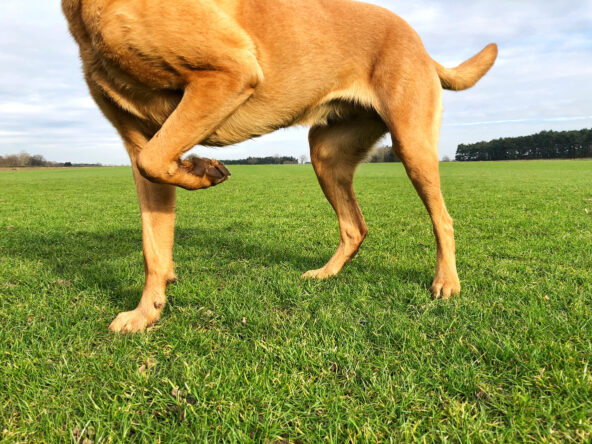
This is one of the more obvious signs of pain, but it’s not always as clear-cut as a dramatic limp. Sometimes it shows up as a slight hesitation to put weight on one leg, a shift in posture, or a reluctance to climb stairs or jump up onto furniture like they usually would.
Dogs often try to mask pain by adjusting how they move. Watch for signs like stiffness when they first get up, a limp that comes and goes, or favouring one side of their body. Even a subtle change in their gait could be their way of compensating for something that doesn’t feel right.
5. Their breathing changes without reason.

If your dog starts panting heavily when they haven’t been running, or it’s not warm, that can be a sign of discomfort. Pain often causes shallow, rapid breathing, or in some cases, laboured, slow breaths that seem out of sync with their usual rhythm.
You might also notice changes in posture while they breathe—like stretching out their neck, shifting positions frequently, or looking anxious without a trigger. Changes in breathing can point to everything from muscle strain to internal pain, and it should always be taken seriously when it seems out of place.
6. They’ve stopped wanting to play.

If your dog no longer shows enthusiasm for their usual games, toys, or walks, that drop in energy might not just be mood-related—it could be a sign that something hurts. Pain makes movement less appealing, and even mentally stimulating games may feel overwhelming if their body’s not feeling good.
You might notice they start a game and then stop quickly, or they hesitate when you offer their leash. This loss of interest isn’t always dramatic, but when play disappears from your dog’s daily routine, it’s often because their body isn’t cooperating the way it used to.
7. Their eating habits suddenly change.

Dogs rarely skip meals without a reason. If your dog is suddenly uninterested in food, chewing strangely, or dropping food from their mouth, it could signal mouth or jaw pain, or more generalised discomfort that’s affecting their appetite.
Also pay attention if they’re drinking less water, chewing on one side, or avoiding certain textures. Dental pain is extremely common in dogs and often goes unnoticed until eating becomes a problem. Any unexplained shift in how—or whether—they eat should be considered a possible warning sign.
8. They whine, yelp, or make unusual sounds.

Dogs in pain may become more vocal, but it’s not always loud. Whining, groaning, yelping, or even high-pitched sighs can be subtle cries for help. You might hear these noises when they change positions, climb stairs, or react to being touched.
Sometimes the sounds are so soft they’re easy to miss, but they matter. Vocalising is one of the few ways dogs can directly express pain, so any increase in odd or unexpected sounds is something to take seriously, especially if they coincide with movement or pressure on certain areas.
9. Their posture looks stiff, hunched, or tense.

Dogs often change how they carry themselves when they’re uncomfortable. You might notice they’re sitting differently, walking with a lowered head, or keeping their back arched more than usual. Even subtle changes in posture can be a protective response to pain.
If your dog starts avoiding stretches, stops doing their usual “shake off,” or seems tense while resting, their body is likely trying to guard something that hurts. The way they lie down, get up, or hold themselves often tells a story long before other symptoms appear.
10. They shake or tremble while resting.
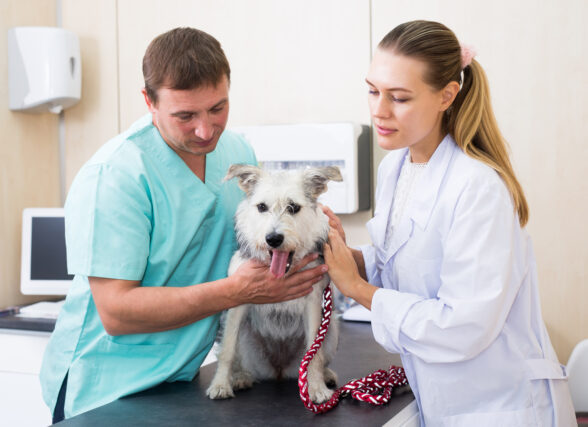
Shivering or trembling that’s not related to temperature or fear can often be a pain response. Some dogs tremble when they’re nervous, but if it happens while they’re relaxed or in familiar settings, it could indicate something deeper going on physically.
This kind of shaking is often overlooked or blamed on nerves. But if it’s paired with changes in appetite, mobility, or behaviour, it could point to underlying pain, especially in joints, muscles, or internally, where it’s harder to detect.
11. They have trouble getting up or lying down.
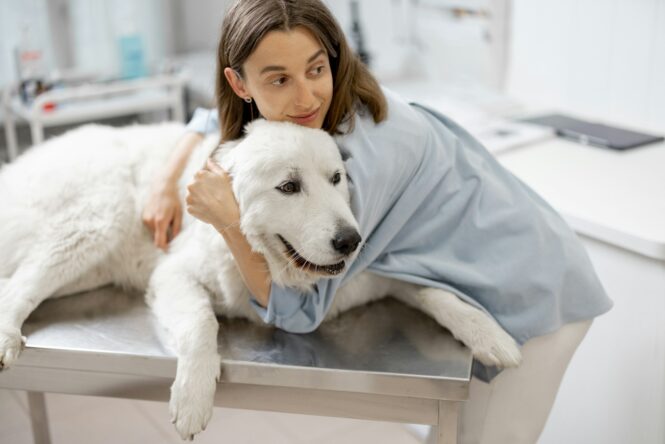
Movement transitions reveal a lot. If your dog used to jump up easily but now struggles, hesitates, or takes a long time to lie down, it could be because the movement causes discomfort. You might notice stiffness in the morning or a reluctance to leave their bed.
This sign is especially important in older dogs or breeds prone to arthritis, but it can happen at any age. Watch how they navigate movement during everyday routines—getting in and out of the car, stepping up onto the couch, or lying down for a nap. Slower, more cautious movement is often a giveaway.
12. They’re unusually clingy or won’t leave your side.

Dogs in pain sometimes become more attached. If your dog suddenly starts following you from room to room, seems anxious when you leave, or leans on you more than usual, it might be more than affection; they could be seeking comfort or reassurance.
While not all clinginess signals a problem, a sudden increase in this kind of behaviour, especially if paired with other subtle signs, can be your dog’s way of saying something doesn’t feel right. Their need to stay close is often rooted in feeling vulnerable or uneasy.
13. They stop doing small routines they love.
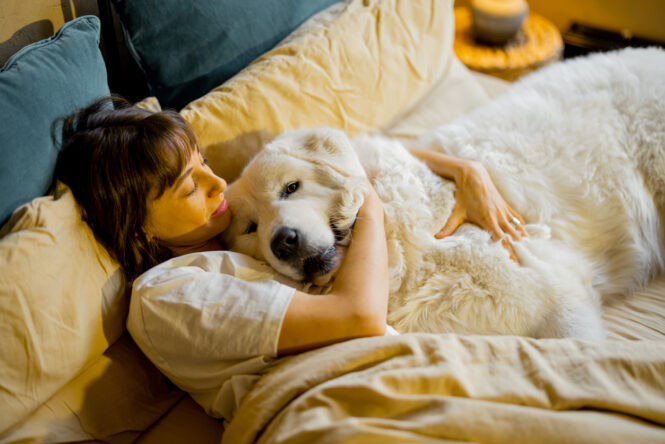
Pay close attention to the little things: the way they used to greet you at the door, run to the window when the mail arrives, or follow you into the kitchen. When those tiny behaviours start disappearing, it can be a sign they’re not feeling like themselves anymore.
Pain often creeps in quietly, dulling your dog’s spark before more obvious signs show up. If they stop participating in daily rituals or suddenly seem disinterested in their favourite moments, it’s worth looking into. Sometimes, those missing habits are your earliest clue that something isn’t right.




